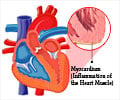
‘Black men and white women who said that they experienced abuse and grew up in a dysfunctional household were more than 3.5 times as likely to develop high cholesterol as those who reported no abuse during childhood.’
Tweet it Now
Advertisement
Childhood — The Better Indicator of Heart Disease Risk
Heart disease and stroke are more common among older people but the risk begins much earlier in life. Previous research also confirms that physical and psychological abuse and other adverse experiences in childhood increase the risk of developing obesity, Type 2 diabetes, high blood pressure, and high cholesterol, which, in turn, increase the risk for heart disease. Conversely, healthy childhood experiences including nurturing, loving relationships in a well-managed household, and having family members who are involved and engaged in the child’s life may decrease the heart disease risk.Advertisement
New Way of Assessing Heart Disease Risk
In the new study, researchers explored whether nurturing relationships and well-managed households may offset the likelihood of higher cardiovascular risk factors.“Our findings demonstrate how the negative and positive experiences we have in childhood can have long-term cardiovascular consequences in adulthood and define key heart disease risk disparities by race and sex,” said study lead author Liliana Aguayo.
Researchers examined information from the Coronary Artery Risk Development in Young Adults (CARDIA) Study, an ongoing, long-term study among 5,115 Black and white adults enrolled from 1985–1986 to 2015–2016. Study enrollment occurred in four U.S. cities: Birmingham, Alabama; Chicago; Minneapolis; and Oakland, California.
More than half of the study participants were women, and nearly half were Black adults. At the start of the study, participants were 25 years old, on average.
All participants received initial clinical examinations and eight additional examinations every few years to assess cardiovascular risks over 30 years. At ages 33 to 45, participants completed a survey of questions to assess areas of their family life during childhood.
Advertisement
How to Evaluate the Childhood Life Experience?
For this analysis, three areas were examined.Abuse
How often a parent or adult in their home pushed, grabbed, shoved, or hit them so hard that they were injured; and how often a parent or adult in their home swore at them, insulted them, or made them feel threatened.
Nurturing
How often a parent or adult made them feel loved, supported, or cared for; and how often a parent or adult in the family expressed gestures of warmth and affection.
Household Organization
Did they feel the household was well-managed and did their family know where they were and what they were doing most of the time.
(No definitions or criteria were provided for the term “well-managed”; study participants were instructed to determine if the term described their childhood family experience.)
What the Findings Revealed?
About half of the participants reported no childhood abuse and described their family life during childhood as nurturing and well-managed. Roughly 30% of participants reported experiencing childhood abuse.Among the adults who reported experiencing abuse during childhood, the risk of Type 2 diabetes and high cholesterol was higher, compared to the adults who reported no abuse in childhood.
The risk of high cholesterol was 26% higher among white women and 35% higher among white men who reported low levels of abuse in childhood, compared to same-sex and race adults who reported no abuse in childhood.
The risk of Type 2 diabetes was 81% higher among white men who reported occasional/frequent abuse during childhood, compared to adults who reported no abuse in childhood.
In contrast, among people who reported growing up in a well-managed household, the risk of high cholesterol decreased by more than 34%.
Further research is needed to better understand the potential mechanisms linking childhood abuse and family environment to higher heart disease risk factors, as well as the impact of structural racism and social determinants of health, which likely influenced the differences we found by race and sex.
This information is critical to strengthening heart disease prevention interventions and policies, particularly those that focus on people who experienced abuse or other trauma during childhood.
Source-Medindia















